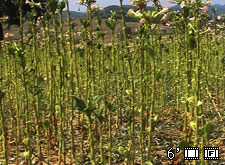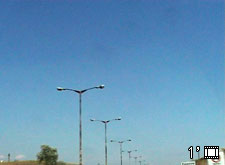M explains to us that under communism you not only needed passport, special permission and a visa to cross international borders. There were borders inside borders inside borders. Inside the actual line dividing two states there was an ‘absolutely prohibited’ zone which varied between 10 and 100 metres. Thereafter there were two more zones which shifted border controls to thirty kilometres inside the country. This meant that anyone who did not actually reside in the strip of land running up to the international border also needed authenticating documentation in order to get into it. These were not just spot checks on the road, but permanently manned road blocks. Those who lived within these zones had special IDs to allow them to live there and farm the land. Nowadays the apparent congruence of territory and border has become mutable: we are seeing an era where many ‘real’ borders are disappearing (especially those restricting the flow of goods and capital) and new ones being constructed. Thus at the same time as it goes about removing internal national borders the EU has begun to regard its southern perimeter as beginning in the geographical territory of Morocco and Senegal for the purposes of immigration control.  As far as immigrants and travellers are concerned, United States border restrictions begin in Vienna or Sofia, for example, and are enforced by any airline flying there. As far as immigrants and travellers are concerned, United States border restrictions begin in Vienna or Sofia, for example, and are enforced by any airline flying there.
Our road is now passing through a tobacco growing region. After a while we turn almost due north, tracking the Varbitsa river, dropping in altitude, heading for Kardzhali. Minaret fingers point at the sky in almost every village we pass. Historically there was a strong Ottoman/Turkish presence here so that up until 1913—the end of the Balkan Wars against the Ottoman Empire—the population was very largely Turkish- or Bulgarian-speaking Moslems. |
|
Over the next twenty years the forced expulsions and ‘encouraged’ emigration of the former group followed by communist party policy of subsidising Christian Bulgarians to take up residence in the area together with the post-communist economic slump (leading to further emigration to Turkey) has led to the situation where only about 60% of the town’s inhabitants are now ‘Turkish’. The overlapping of ethnic and religious categories is something that I need to clarify. Roma are also a presence in the town (as they are in most places) forming about 3% of the population, slightly less than the national average. So although the town is politically controlled by a Turkish/Moslem  dominated movement it is much more mixed than it once was. And the town is still contracting, having lost an estimated 10% of its inhabitants in the last 15 years. dominated movement it is much more mixed than it once was. And the town is still contracting, having lost an estimated 10% of its inhabitants in the last 15 years.
It’s midday, the sun is strong and, having crossed into the city over the Arda bridge, the river flowing west to east, we take a break, leave the car nearby in the shade and go into a park to investigate a huge, black monument that caught our eye as we drove by. It proves to be the ignominious remains of a communist era memorial. From what is left of the pedestal we can see that there must have been a bronze statue here, but it has been roughly toppled and removed. All that now remains are enigmatic stone blocks and (literally) a bad smell – it seems to be in use as a public convenience. In contrast, the monument to the Balkan Wars at the other end of the park is intact, still part of acceptable historiography. And there is another puzzling statue of stone from the surrounding karst. |